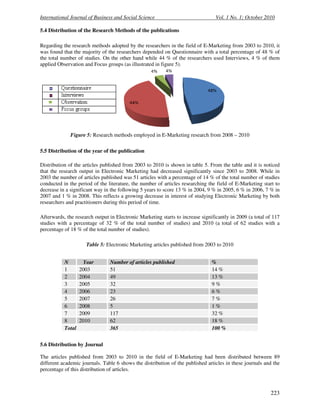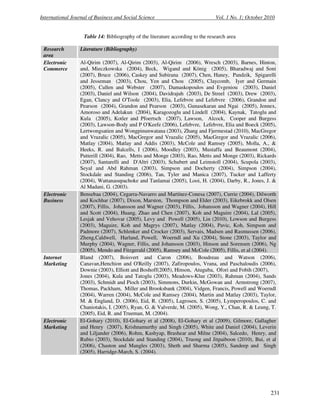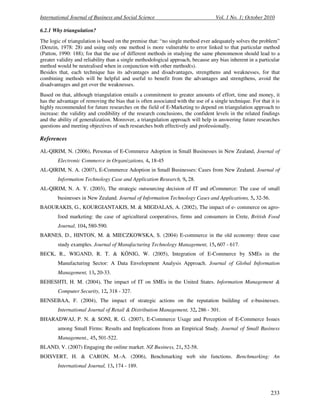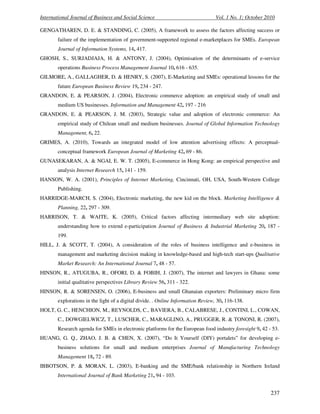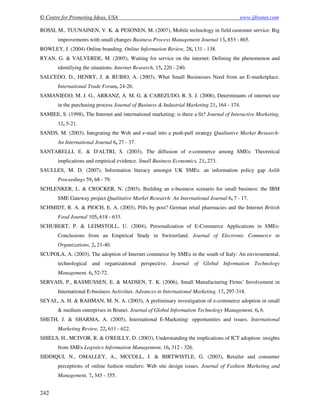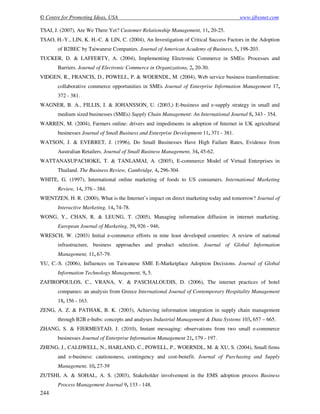This document provides a literature review of research on e-marketing published between 2003 and 2010. It identifies the main research areas covered, including e-business, e-commerce, internet marketing, and mobile marketing. The review found many studies on e-commerce but few on e-marketing adoption in small businesses. It used Hanson's internet marketing framework to systematically review 365 studies across marketing, business, and information systems journals. The review aims to identify gaps, evaluate methodologies, and provide guidance for future e-marketing research.









